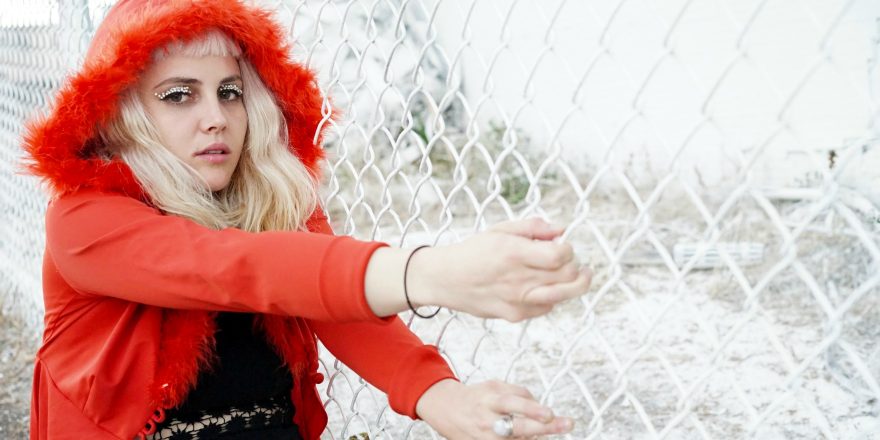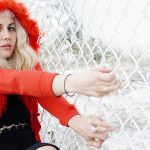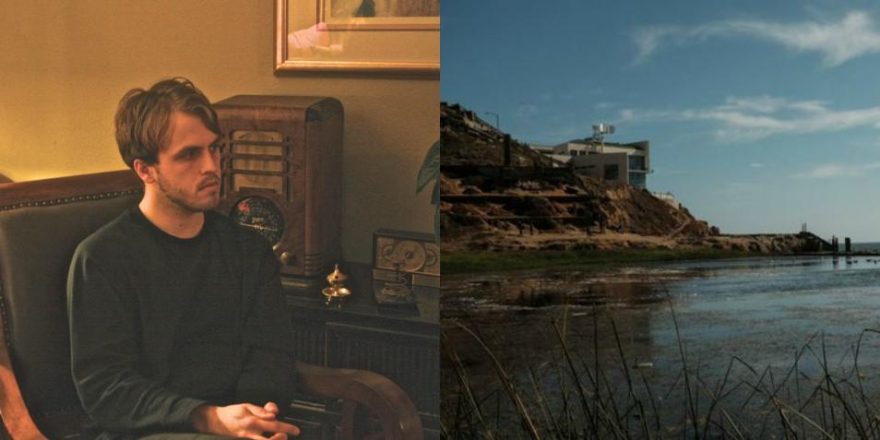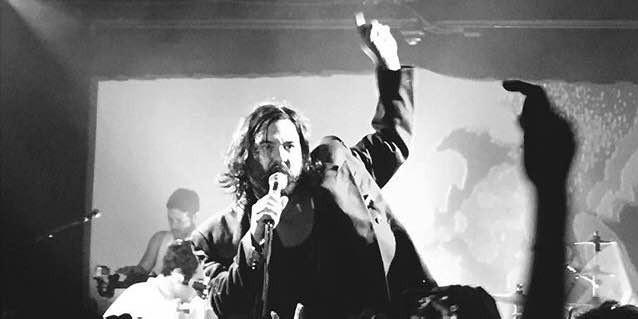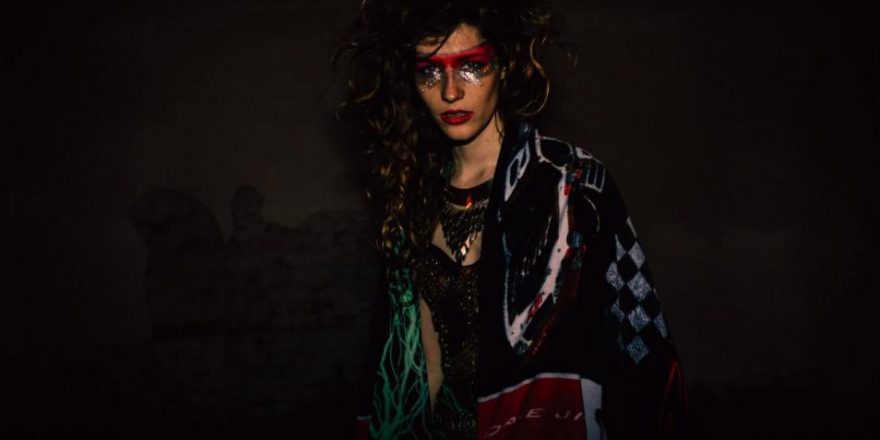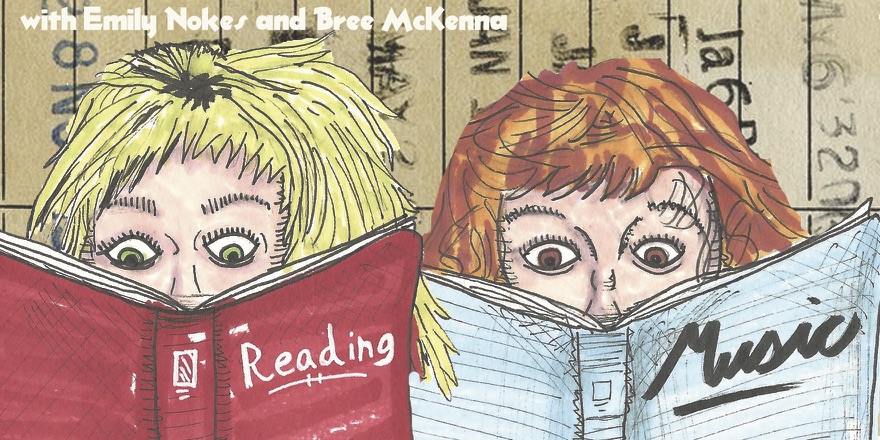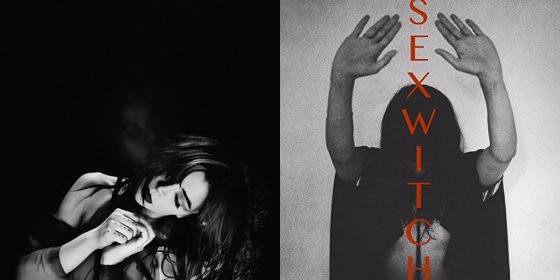“Once upon a time. What is that supposed to mean? In the room full of musical instruments, watercolor paints, candles, sparkles, beads, books, basketballs, roses, incense, surfboards, china pixie heads, lanky toy lizards and a rubber chicken, Witch Baby was curling her toes, tapping her drumsticks and pulling on the snarl balls in her hair. Above her hung the clock, luminous, like a moon.”
— Francesca Lia Block, Witch Baby (1991)
And so begins Witch Baby, the second book in a series called Dangerous Angels by Francesca Lia Block (or FLB to my circle of fellow fans/friends). Witch Baby is also the book from which I got my musical name, Globelamp.
While reading the Dangerous Angels series as a teen, I immediately related to main character Weetzie Bat’s adopted daughter, Witch Baby. She was the purple-eyed, wild-hearted, drum-playing, roller-skating, photo-taking fairy who floated above the ground — yet couldn’t see her own beauty. Witch Baby felt the roaring of the earth, the rage beneath the surface of reality, the stories trapped in the land — the things most people pretended weren’t there. Was her third eye open or did she just happen to be charmed? Witch Baby wasn’t all angry, though — she was just misunderstood and wanted to be heard. Sort of like me. It was hard for her to feel the pain of the world, but it became bearable after she found the vehicles (music and photography) to channel her passion into.
Witch Baby wasn’t all angry, though — she was just misunderstood and wanted to be heard. Sort of like me.
Most of Francesca’s books take place in Southern California, which helped me connect with them even more. I was raised by a single mother and have lived in numerous places around Southern California throughout my childhood. As a little girl, I lived in Los Angeles for a few years during elementary school, but at around age eleven moved to Orange County. Although Orange County is about an hour and a half away from L.A., the two places were very different. Instantly, I felt a change in my school environment. It wasn’t until I was older that I realized what that change I felt as a child was: there was no diversity at all. Everyone was white, Christian and relatively wealthy. This was a stark contrast to my previous school, Canfield Elementary, where I, a white girl, was in the minority. My two best friends in L.A. were from Ethiopia and Peru, and Canfield incorporated different cultures into our curriculum. During the holidays, we learned Hanukkah and Kwanzaa songs, not just Christmas songs.
It was in high school that my disdain for the city that I lived in, Mission Viejo, came to a peak. My school had the number-one football team in the country. This meant lots of games and pep rallies that I never went to. The people at my school thought I was weird and strange. They called me a lesbian and a dyke because I didn’t shave my legs and wore skirts. Not relating to my peers, I spent whatever time I could with my then-boyfriend, who went to another school. Every weekend, we helped collect vegetarian food in his town to give out at a park with a group called Food Not Bombs (Comida Nos Bombas, FNB). During this time, magic was in the air. I was starting to figure out my creative process — or at least beginning the journey toward understanding that I don’t really know anything.
After joining Food Not Bombs, everything changed. The surface of the reality that I knew was shattered. At Food Not Bombs, I was exposed to political ideas that I had never thought of before — but once thought, they would never leave my memory. Peace and happiness. Equal rights for all. The end of factory farms. The end of drilling the earth. The search for environmental solutions. These ideas seemed like common sense, the most logical way to keep healthy the world in which we live. Is it wrong to hope to live in a world not controlled by those who only want power and corruption? What Time Are We Upon? A time of air pollution, factory farms, wars and global warming. This shift in the way I saw things — my becoming a vegetarian and an environmentalist — happened to coincide with when I read the Dangerous Angels series.
During this time, magic was in the air. I was starting to figure out my creative process — or at least beginning the journey toward understanding that I don’t really know anything.
A friend at Food Not Bombs let me borrow a copy of Block’s Echo (2000). This friend was thirteen years old, and it was the only book that she liked. The book smelled of an unknown perfume (patchouli oil, I now know), and the pages were frayed from being carried around in her backpack. As I began reading, the lyrical writing pulled me in — the poetic descriptions of Los Angeles. The patchouli somehow only made the story come to life more as my mind absorbed a world full of zany characters, fragrant flowers, Venice Beach, the valley, punk kids, concrete, alternative culture, exotic spices and Canter’s Deli — a world that could be in my own backyard. I felt like I could relate to the main character, Echo, who lived in L.A. and wished to be a green-haired mermaid. At that point I had only dyed my hair black. “Green,” I thought, “sounds cool.”
After devouring Echo, I bought copies of Francesca Lia Block’s other books, including the Dangerous Angels series, The Hanged Man, Girl Goddess #9, Primavera, Violet & Claire, Wasteland, The Rose and the Beast: Fairy Tales Retold and I Was A Teenage Fairy. I related to all of the characters, but my mind kept going back to Witch Baby. I felt the anger and pain of the world like Witch Baby. I wanted to capture it in my photos. I wanted to watch images bloom on paper in liquid trays in the dark room. I wanted to explode my emotions into my music.
After reading her titular book, a certain chapter name struck with me: “Globelamp.” It was more than a chapter name, though; Witch Baby had a globe lamp that was a symbolic part of the story. Her globe lamp was a reminder that she could be a part of something loving and true, and that she could go wherever her finger landed as the globe spun round and round. No matter how dark it was out, she could still have her inner sphere of light. I had seen a globe lamp before but had never owned one. I’m not sure why I was so drawn to this image and the feel of these two words together, but I immediately made it my e-mail address. It wasn’t until years later that I had a physical globe lamp and my musical project.
Reading Francesa Lia Block’s books made me curate my life in a magical way. Her description of California changed how I viewed the region I thought I knew so well. Before reading a FLB book, I was always complaining about the pollution and heat, focusing on the concrete jungle — the belly of the beast that is L.A. After reading Block’s books, I started to see the beauty in the diversity and the myths that make L.A. what it is — even inside the smoldering heat, congested traffics, stale sunshine, jinxed rain dances, empty parking lots, a wasteland with teenagers dancing. Teenage riot on Sunset Boulevard. Los Angeles. Shangri-LA. Shangri-LOVE. HELL-A. Los Diablos. Hollywood. Hollyweird. Weetzie Bat.
Here I am again in the car with my mom — this could be at any point in my life — sweating in the heat as she frantically searches the backseat for something that she misplaced. It’s one hundred and eleven degrees today in Los Angeles. She was all I had as a small child — her and her side of the family, my nana and aunt. There was always music playing loudly in the car as we drove up and down the 5 Freeway to my nana’s in Dana Point and back to our apartment in Los Angeles. I remember K-EARTH 101 playing “oldies.” Back then, that was music such as the Supremes, the Doors, Van Morrison, Otis Redding, etc. Now they play Guns N’ Roses and Duran Duran. It doesn’t feel like the same station. It doesn’t feel like the same L.A. But that’s the thing: L.A. is where stories come alive. I’ll make my life like a story. Instead of complaining, I’ll start creating.


